What good is a piano that you cannot hear? What good is a sculpture that you cannot see? What good is a meal you cannot taste? These are things that have beauty, utility and functionality, yet if we cannot get the benefit of their inherent characteristics, we might as well not have them. It is the same with your sunscreen – if it does not protect you, you might as well not use it. This short commentary will explain the reasons why a well-designed sunscreen with all of the “right ingredients” might not work, and what you can do about it!
Scientists spend a lot of time worrying about SPF levels, ingredient compatibilities and regulatory restrictions, but they spend much less time on the simple concept of user behavior. This concept can be easily explained in terms of medicines – the right medicine for the correct symptoms taken wrongly (say once a day instead of once per hour, or one pill vs. three pills per dose) will have minimal or no effect, and this is the same for a sunscreen. The right sunscreen with the right level of SPF applied wrongly will not offer the proper protection to your skin.1
So what are the ways a sunscreen can be applied wrongly? Here are a few:
- Not using enough to cover your skin completely
- Not reapplying after exposure to water
- Not reapplying after normal wear over the course of the day
The first two are well-known, but what about the third? Did you know that you touch your face 2,000 to 3,000 times over the course of the day? That equates to about twice per minute! What might happen to a sunscreen that was applied to your face in the morning, over the next eight hours (almost 1,000 touches later)? It is very likely –especially if the sunscreen wasn’t applied perfectly to begin with – that much of it would be worn away, offering less and less protection as the day goes on.
Let’s take a look at this gap between the theoretical performance of a sunscreen and the reality of real-world conditions. Using specialized equipment (a device that takes pictures in the UVA range), and a panel of volunteers with different skin types, phototypes, ages and genders, we studied the protective film of a sunscreen on the skin, how it decreases over time, and what we can do about it. We looked at how smooth and even the sunscreen film was on the face after application, how durable that film was over time, the effect of different sunscreen compositions on performance, and the effect of applying multiple skin care products over each other.2
In the first set of trials, we told the panelists to apply a sunscreen mist product (SPF 50) “enough to cover the whole face”; a mist is usually sprayed on the face and left to dry, without rubbing it in with your fingers. The result was noteworthy – the sunscreen film on the face after application was not homogenous and did not cover the face evenly.
Next, we used a Korean sunscreen cream (SPF 50+) applied with a cushion puff, a new method not commonly used and unfamiliar to our panelists, but becoming trendy. Here, the results were even more striking – terrible coverage, with inconsistent application on different parts of the face, including some parts that were missed entirely. In one panelist we saw that later touches with the cushion puff removed some of the sunscreen that was just applied with the first touches!
The final test was done with a classical sunscreen (SPF 50) applied in the traditional way (rubbed in with fingers), and here we finally saw good, even coverage, with all parts of the face equally protected. But in all trials, we found something interesting – the panelists used, on average, about half of the quantity typically used in SPF tests, which confirms the basic fact that users do not apply enough sunscreen to reach the SPF levels stated on the label.

In other tests, we looked at the amount of sunscreen applied, asking ourselves if applying more in the morning means better coverage throughout the day, and of course we saw that it did – more coverage in the morning increases durability over time – and we also evaluated different systems – water-in-oil (W/O) emulsion, oil-in-water (O/W) emulsion and a bi-gel system (emulsifier-free) – and found that a system based on W/O emulsion provided better coverage and more durability over time.
Later, we looked at the effect of “layering” with the aim of understanding how products interact with each other. If we apply a moisturizer first and then add a sunscreen on top of it, does it alter the film and the protection provided? Interestingly, on the panelists who used the moisturizer first, the sunscreen absorbed into the skin less BUT had a better protective film. The conclusion – layering works!
So back to our original question – what can you do to get the full benefit of your sunscreen?
- Take the amount of sunscreen you usually apply and double it!
- Apply your sunscreen the good old-fashioned way – rub it in with your fingers.
- Apply a moisturizer first, and then apply your sunscreen afterwards.
Taking these simple steps will ensure you can listen to that piano concerto, appreciate that sculpture and enjoy that meal, confident that your sunscreen is hard at work protecting you!
*If you don’t wear sunscreen because you’re worried about not getting enough vitamin D, we suggest making the proper changes to your diet/nutrition (e.g. drinking more smoothies rich in vitamin D).
References
- Petersen B, Wulf HC. Application of sunscreen–theory and reality. Photodermatol Photoimmunol Photomed 30(2-3): 96-101, 2014
- Hubiche V. Wear and tear of daily wear. Keeping that sunscreen on the skin. Presented at the SCC Sunscreen Symposium, Orlando, FL, September 14-16, 2017. Also available on www.gattefosse.com/webinars
Guest Author: Lauren Del Dotto & Ben Blinder
Lauren Del Dotto
 Lauren Del Dotto is the North American Marketing Manager for Gattefossé USA – Personal Care Division, where she is responsible for the marketing strategy and activities of the company throughout the US, Canada, and Mexico. She also works closely with Gattefossé headquarters in France in the development of global marketing strategies and programs. Lauren is a graduate of Georgetown University and has been working in the personal care industry for 12 years. Prior to her experience with Gattefossé, Lauren worked in marketing as well as international business development for TRI-K Industries.
Lauren Del Dotto is the North American Marketing Manager for Gattefossé USA – Personal Care Division, where she is responsible for the marketing strategy and activities of the company throughout the US, Canada, and Mexico. She also works closely with Gattefossé headquarters in France in the development of global marketing strategies and programs. Lauren is a graduate of Georgetown University and has been working in the personal care industry for 12 years. Prior to her experience with Gattefossé, Lauren worked in marketing as well as international business development for TRI-K Industries.
Ben Blinder
 Ben Blinder is the Senior Director for Gattefossé USA – Personal Care Division, where he is responsible for the strategic direction and performance of the cosmetic business for Gattefossé in the US and Mexico. Ben holds a chemical engineering degree from Lehigh University and has been working in the personal care industry for 32 years, with extensive experience in strategic and long-range planning, sales and technical management, and new technology search/discovery. Ben also serves on the NYSCC Scientific Committee.
Ben Blinder is the Senior Director for Gattefossé USA – Personal Care Division, where he is responsible for the strategic direction and performance of the cosmetic business for Gattefossé in the US and Mexico. Ben holds a chemical engineering degree from Lehigh University and has been working in the personal care industry for 32 years, with extensive experience in strategic and long-range planning, sales and technical management, and new technology search/discovery. Ben also serves on the NYSCC Scientific Committee.

